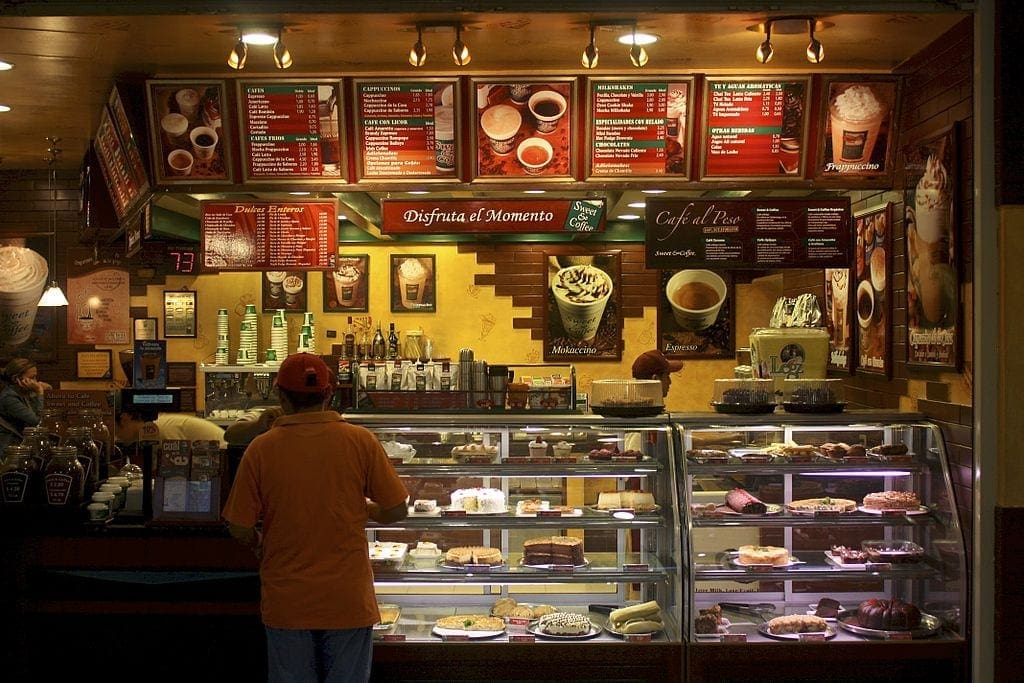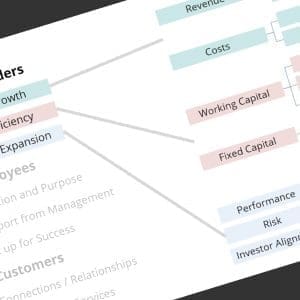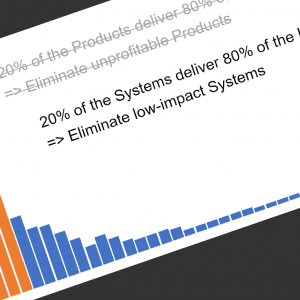A practical analogy for operating your IT function "like a business", with emphasis on design, usability, sustainability, and rigor. Think of your team as the boutique consulting firm that it really can be. The real payoff comes when you focusing on the built-in advantages of the internal team ...
Ron Tolido recently used the metaphor of a local Starbucks invasion and the impact on the local coffee shop, comparing it to the introduction of PaaS services such as Amazon Web Services. I like to use the coffee shop metaphor for Corporate IT, to illustrate the need for design, usability, sustainability, rigor – and operating IT as a business.
Consider the local diner; it’s been around for ages, featuring the same menu, the same wait staff, and the same decor for over 30 years. But it’s a known entity – you’ve established friendships with the folks who bring the coffee, and you know the other folks in the dining area and like their company. It’s not a hub of dynamic change in your life – but it’s comfortable, and it’s good enough to get the job done. For years, it’s been Our Favorite Place to Hang Out (but then again, it’s been the only place to hang out if you wanted a cup of coffee).
But Progress has made its way into our corner of the world – fancy new boutique coffee shops where the food is a nice add-on. The decor is flash, comfort, and worldly – makes you feel more sophisticated just being in there. The staff is young, hip, and full of energy – and, since they are new in town and/or entrepreneurs trying to scratch out a living, they are very attentive. To cater to the technically hip, they offer the latest technology – WiFi and mobile apps, and a Facebook page that lists the Flavor of the Week.
Voting with Their Feet (and Wallets)
And soon, the customers of Our Favorite take a look around, and start to grouse a bit.
The deLuca gives me a broader selection of options – why the limitations?
I really want the latest and greatest, high quality stuff – why can’t you be more cutting edge, like the Asado?
Why can’t you folks have nicer decor?, I like to feel comfortable, and the Metropolis is like hanging out with the hip crowd at college. And they have mobile apps …
It’s tough to be all things to all people – and the frustrating thing is, no one is talking about price! The owners of Our Favorite have their own frustrations with the situation …
What happened to the relationships? We know you folks so well, we know how you like your coffee and toast …
Hey, we’ve been struggling to keep our prices the same for years – why are you paying $5 just for a cuppa joe?
And that SocMed / mobile stuff – a passing fad – don’t you like the free newspapers and the conversation?
But the reality is long lines, steady growth, and experimental offerings at the new shops, while our Old Favorite continues to serve a dwindling crowd of Regulars that are averse to change. A sort of reverse-evolution takes place – as demand dwindles, so does the budget, and efforts are focused on keeping the customers they have. The more traditional employees stay put (it’s what they know), but the more adventurous, high energy, entrepreneurial workers are drawn to the new, “fun”, “innovative” joints.
Marketing Changes The Game
Yes, this is the impact of marketing – but realize that true marketing is not cynically pandering and manipulating the buying decision. It’s really about understanding what is important to your target audience, how they want to consume (your food as well as your message) – as well as educating them on your value proposition and exposing them to newer tastes in a comfortable, sure-handed way.
Did I forget to reiterate the price thing? Isn’t it fascinating that folks will cross a busy street to pay $5 for a cup of coffee at the new place, even though the Old Favorite has the cheapest menu in town? The truth is that this customer base [obviously] would have paid more for coffee all along; they were [and are] willing to pay more when they get the total package they are looking for …
- Ambiance & Accessibility – a full menu that is easy to understand and use
- Variety, Sophistication, & Quality – a broad menu that understands global trends, but offers the right amount of focus to ensure that what you order, you get
- Extras – A bit more than what is on the menu – a comfortable atmosphere with just the right amount of add-ons that suits how folks want to drink coffee
IT “as a Business” – with an Exploitable Advantage
If I have crafted my metaphor well, the parallels to the overused “running IT like a business” paradigm should be obvious. I am typically not a fan of that concept, because in my opinion, folks pay too much attention to the wrong things when trying to run IT like a $1B Fortune 1000 business.
A better approach would be to run IT like the boutique consulting firm that it really can be. Spend your time focusing on these areas …
- Ambiance & Accessibility – Pay attention to the design of your message and your processes. Collect the knowledge about your systems in an accessible, self-service repository that is easy to work with and features feedback and other connection mechanisms
- Variety, Sophistication, & Quality – Find a more innovative, experimental balance between the tried and true, that’s-the-way-we’ve-always-done-it approach. Don’t let up on the SarbOx requirements you have, or the Risk and Compliance controls you’ve successfully set up – but don’t be so inflexible that you can’t establish different tiers or pace layers
- Extras – Budget time to actively and aggressively experiment with new technology, new ways of doing the same thing. IT is often in the best position to make time for such work, and also to understand how to integrate this stuff into the business in a sustainable way (because the cutting edge is typically a bit buggy, and not well documented)
But the most impactful thing you can do is develop comprehensive budget reports and tracking skills – and communicate them well! This “transparency” is the most underutilized competitive advantage that corporate IT shops have; if the functional areas of the business understand the total cost to implement and to operate a given system, and you clearly lay out the real hourly rate being paid for internal labor – it typically makes a surprisingly effective dollars-and-sense business case to use internal resources.
Better Get Some Coffee
… or some other source of energy, however; typically, Design and Communication are not core competencies of most IT groups.
But look on the bright side – maybe you can come up with a cool new name for your IT team …
8 July, 2012






Comments (2)
Good post with a lot of thought in it. I’m reminded of Malcolm Gladwell’s ‘thin-slicing’ concept as relevant to this IT as a boutique (vs. a ‘business-only’) mindset. For one thing, the new mobility craze is a lot like the new coffee shop model – it’s more fun even if it’s still just ‘coffee’ or in this case information. But in reality there is a lot more to these experiences – and in the end the consumer will decide what to pay for. So, the notion of offering boutique services at boutique pricing to the interested customers makes a lot of sense.
I’ll date myself by mentioning that I was a CIO in the PC and later the internet revolutions (as I saw them) – and in both cases I embraced these (vs. many of my CIO colleagues who were trying to control them out of existence). In the end, the demand for the new capabilities won out (of course), creating the next generation of information technology.
The ‘thin slicing’ model works in IT management as a boutique set of services. By linking these to the budget process -and marketing them to the consumers – IT remains not only relevant but even ‘interesting’… or maybe even exciting (well maybe just ‘interesting’).
Thanks for the post. I’ll share it with some of my CIO friends.
Hi Jim – I found this to be a very thought provoking article. I like the coffee shop analogy. I agree with your point that some time as IT shops move to this “run IT as a business” mode the focus on innovation and creativity can be forgotten. I’ve seen most of the focus shifting solely to the financial aspect of delivering IT. Which as you point out are important; however, are not the true differentiators for us and in the end many people will walk across the street to pay more for someone’s more exciting coffee anyway.
I think another point that worth some additional emphasis is the the comment you make toward the end of the article which is that design and communication are not typically not core competencies of most IT shops. I don’t think this point can be overstated. I think this is often why many IT shops fail with trying to reposition themselves; they don’t have the requisite competencies in the staff to drive this type of change and don’t realize how important it is to have it. It is often brushed over as “soft” skills that aren’t all that important but in reality they are the most important for making this shift. Therefore I recommend to any organization contemplating this change to first or nearly first do a talent assessment against these compentencies and fill the gaps before they start down this journey.